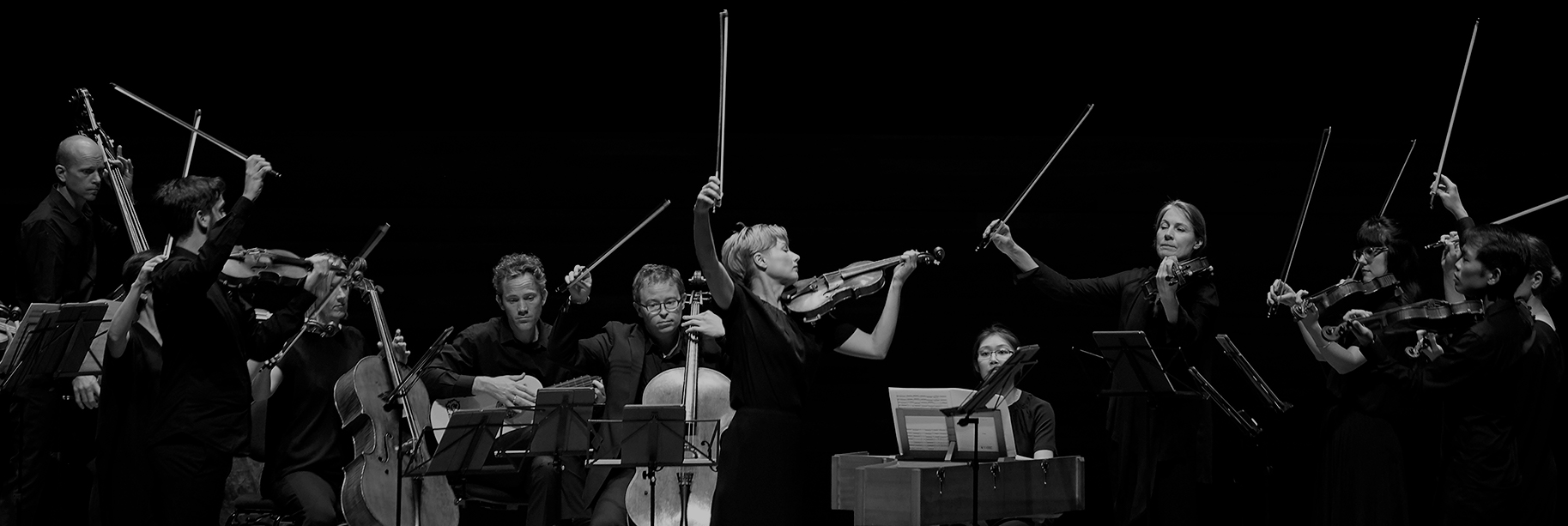Movements (for us and them) 2018
date completed
2018
duration
18'
instrumentation
string orchestra with concertino string quartet
orchestration
5.5.3.3.1 minimum (no greater than 7.6.5.4.3)
commission
Stanford Live and Australian Chamber Orchestra
premiere
June 2018 in Canberra, Australia
Program Note by Sarah Price
The music that affects Samuel Adams the most is experimental. It is the kind of music, he says, where you feel the psychology of the artist changing over time. When he started composing Movements (for us and them), he didn’t know what would happen, or which direction the piece would take. ‘I try to keep things open as I write. I find that the more flexibility I give myself, the more interesting the piece becomes.’
He says that what fascinates him about creating a new piece of music is that it can mean something to one person, and something completely different to someone else. ‘With every piece of mine I try to create flexibility and volubility with the music. I never try to be too specific about my intentions.’
Every piece he writes is a response to the world at the moment, some obliquely, others purely through abstraction. He likes the idea of using the dynamic of a group to potentially model a utopian vision.
There are universal syntonic ideas in art, Adams says. When composing the piece, he was inspired by Italo Calvino’s Six Memos for the Next Millennium. The series of lectures outlines the virtues in literature to which the novelist aspired, as a way to handle the weight of the world. In the writing of his own piece, Adams searched for the same: quickness, exactitude and levity.
The piece is a response to the tradition of investigating the relationship between the composer, the orchestra and the audience. ‘I am really interested in the possibilities of working in a kind of musical context that explores interpersonal relationships. What fascinates me about the concerto grosso is that it suggests a different kind of narrative – it isn’t necessarily about one individual trying to overcome or join some kind of opposing force, but much more about cooperation and fluidity. That’s what I explore in this piece.’
Adams forced himself to reimagine the process of material generation. He spent a lot of time improvising. The material came out of the process of listening to himself improvise, transcribing those dramatisations, playing different ascriptions, and improvising again.
The piece has a lot of forward momentum and energy, much like some music from the 17th and early 18th centuries. ‘It is built on repetitive triplet motifs, which, with the exception of one part, drive the piece forward. One thing I really wanted to explore was the concept of role fluidity. You will hear passages where the two ensembles are very gradually morphing into one another. Movements flow very easily from one section to another.’
Adams sought to explore ‘emotionally available’ melodies. He wanted to give the musicians something deeply expressive to play. ‘What strikes me about the ACO is the personality of the ensemble.
They have a wonderful profile when they come on stage. So much of this piece is about exploring interpersonal dynamics. I would be happy if an audience member leaves the concert feeling like they understand something, that they didn’t previously, of the personality of the ensemble.’
-Sarah Price
(click outside to close)
press
“There are richly ambiguous harmonies at work in the slower and more lyrical movements, as well as a certain textural restlessness that keeps the music from lapsing into sentimentality. And Adams closes by borrowing a witty formal jape from Beethoven, pretending (as the old master does, for instance, in the scherzo of the Ninth Symphony) that he’s going to return one too many times to a repeated theme before abruptly winding things up… this was a suitably vivacious performance, one that caught the energy and charm of Adams’ writing.”
San Francisco Chronicle ↗
"Adams explains the work as a response to the baroque concerto grosso form, in which he explores the relationship between the composer, orchestra and the audience. Adams clearly had the measure of the ACO and his work fed their strengths: extreme responsiveness; swift intuitive communication; perceptive interpretation of experimental music; consummate skill creating sound textures. Inspired by Italo Calvino’s Six Memos for the New Millenium, Adams' work creates in sound music on which to balance the weight of the world. Fluidity of musical ideas and communication between players and music is key, and I was moved by the subtle emotional power of this new work... for me this performance stole the show"
The Canberra Times ↗
"The ACO was totally at home with Movements (for us and them). Their playing of the feverish rhythms, the impossible dynamics, the myriad moods, and the ever-unanswered question undoubtedly created the relationship the composer wanted, confirmed when Adams stepped onto the stage to warm applause from audience and orchestra alike."
Limelight Magazine ↗
"The Australian Chamber Orchestra began its Saturday concert under leader Richard Tognetti with the world premiere of Movements (for us and them) by American Samuel Adams, a mutating series of carefully wrought textures, in which cross-rhythms create the juxtaposition of ideas in independent tempos to create evolving trance-like energy and radiance."
Sydney Morning Herald ↗
